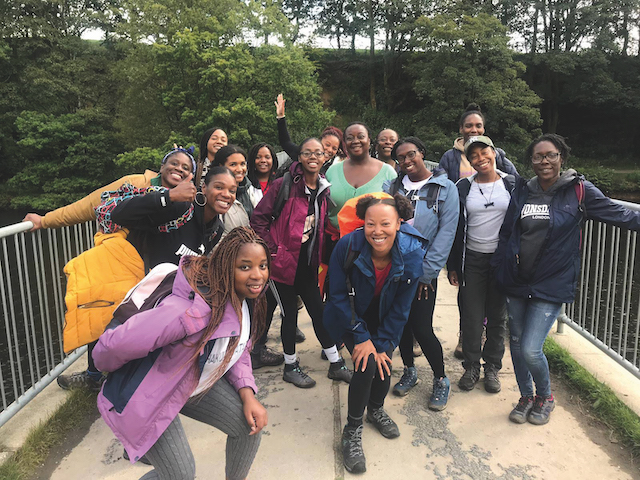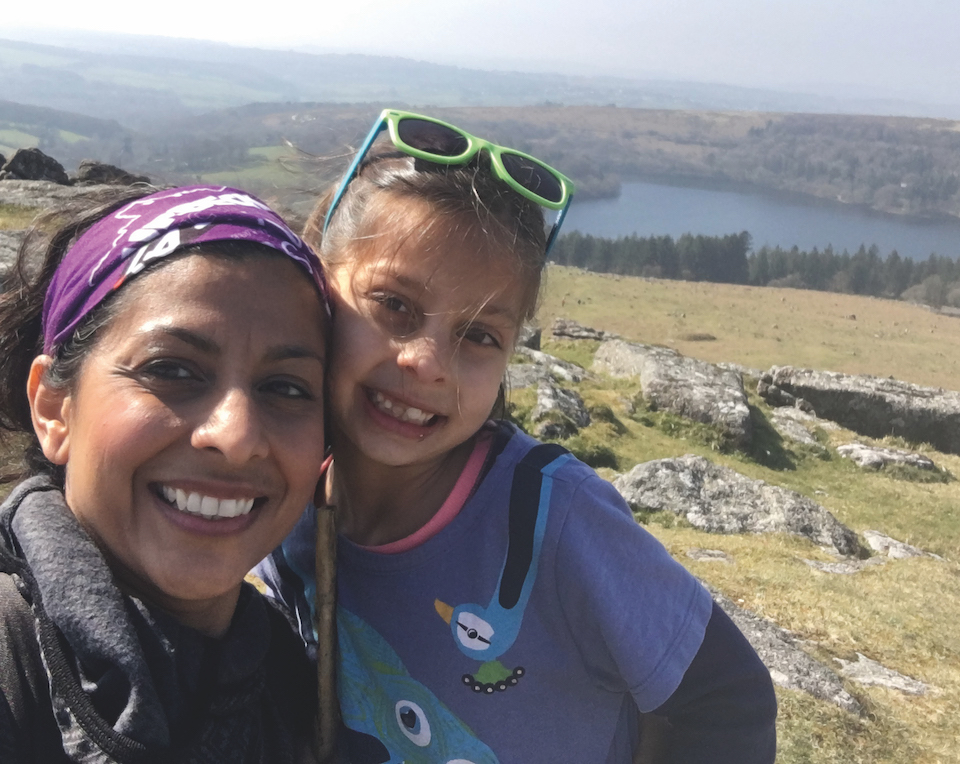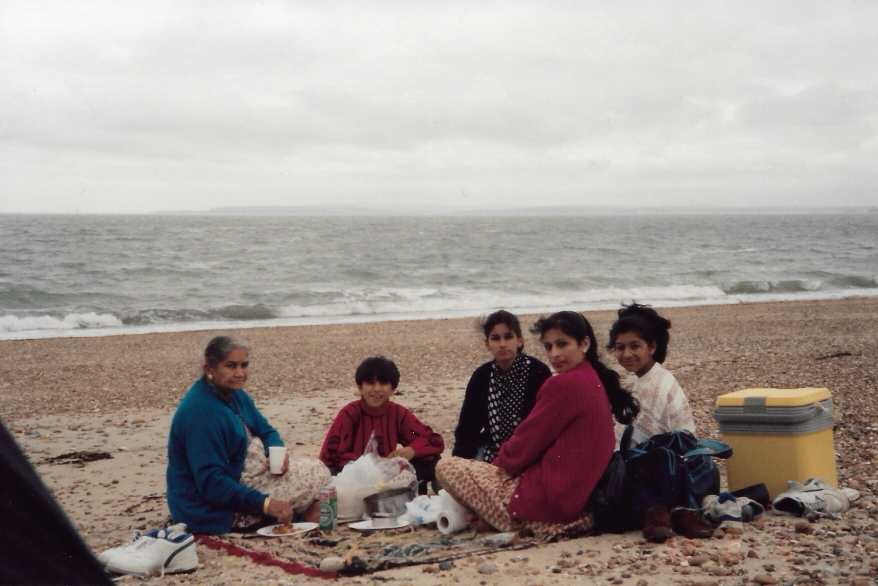Non-white people are up to six times less likely to go hiking; but the lack of diversity in the outdoors is increasingly being challenged. Hanna Lindon speaks to BAME outdoor leaders to get their perspectives.
Earlier this year the head of the Lake District National Park Authority, Richard Leafe, unwittingly sparked a media furore after saying that the Lakes should work to attract a more diverse mix of visitors.
Made against a background of anger at the national park’s refusal to ban 4×4 vehicles from the Tilberthwaite green road and opposition to plans to resurface the Keswick to Threlkeld ‘railway line’ route with tarmac, some felt Leafe’s comments were a smokescreen for a perceived agenda of bringing more unsympathetic commercially-driven development into the park.
But Leafe’s comments on diversity were quickly seized upon. Right wing media outlets rubbished Leafe’s comments on the ethnic homogeneity of the Lake District (The Sun bemoaned the ‘Flake District’, and a writer in The Spectator issued a call to ‘Keep identity politics out of the Lake District’) and heated exchanges erupted on social media, including among many outdoor enthusiasts.
Landscape campaigners like Friends of the Lake District are right to raise concerns over the current direction of the Lake District National Park Authority. But the furore over Leafe’s comments, where questions around accessibility and diversity became bundled up with controversial policies over 4x4s and tarmac, risks obscuring a stark truth – national parks, and the outdoor world in general, are strikingly undiverse.
Black Girls Hike
The statistics are stark. Just 1% of National Park visitors hail from black, Asian and minority ethnic (BAME) backgrounds, despite these communities making up 10% of the British population. A Sport England survey conducted in October found that more than 16% of white people regularly participate in mountain walking, hiking and mountaineering, compared to just 2.6% of black people and less than 4% of South Asians.
Some might argue these discrepancies could simply be explained by a lack of interest in the outdoor world by people from non-white backgrounds, but BAME-led initiatives are increasingly challenging that idea. Rhiane Fatinikun founded the walking group Black Girls Hike in January 2019 and since had over 100 women attend the regular walks she runs across the north west of England.
“Obviously, the black community are not a monolith”, she says. “Many of the barriers black people face are the same barriers everyone faces: access, time, resources and safe spaces. But a lot of people do see the outdoors as a white domain, a space where there is, unfortunately, always the threat of racism and prejudice.

Rhiane Fatinikun (front, blue jacket) leading a Black Girls Hike outing
“As people we’re always outside, we utilise the urban spaces where we live, but the ‘outdoors’ in this context means more rural areas. When black people go to rural areas they stand out and it can feel unwelcoming, and sometimes there’s even a hostile reception. Like the time we were told to ‘go back to the ghetto’ on one of our hikes.
“Geography also plays a big part in accessing the outdoors, and minorities do tend to be centred in more urban areas. Therefore, it does tend to be something we aren’t socialised into as much. But the group has inspired women to get out. It’s broadened people’s horizons and empowered them.”
The ‘countryside club’
It isn’t just countryside visitors and outdoor participants that are disproportionately white. According to the Glover Report, a review into the UK’s protected landscapes published in September 2019, National Park governing bodies are largely white and male. Black, Asian and minority ethnic (BAME) members make up just 0.8% of boards. BAME communities are also unrepresented among rangers, volunteers and visitor centre staff.
“If you go to any National Park and you don’t see people like yourself you think ‘is this for me?’” says MOSAIC Outdoors Chair and campaigner Mohammed Dhalech. “Representation is important. There needs to be a cultural and organizational change, at all levels.”
Mohammed’s concern is echoed in the findings of the Glover Report. The authors note that many communities in modern Britain feel excluded from protected landscapes by a ‘club’ mentality. “The countryside is seen by both black, Asian and minority ethnic groups and white people as very much a ‘white’ environment,” they write.
National Parks have made bids over the years to increase black, Asian and minority ethnic visitor numbers. Most of been unsuccessful – but why? Dr Anjana Khatwa, a freelance learning and environment specialist, believes that conservation agencies simply aren’t involving BAME communities in their decision-making.
“What needs to happen is a sea change in how the conservation agencies listen to minority communities,” she says. “They need to bring them to the table and ask them what they want. What is currently happening is that conservation agencies are imposing their own ideas of what they think those communities want.”

Anjana Khatwa
Where real engagement does take place, it’s often a success. Take the Yorkshire Dales National Park, cited in the Glover Report as an exception to the ‘dispiriting’ failure to increase BAME visitors in National Parks. YDNPA Education and Events Manager Catherine Kemp says that her team worked hard to build contacts that represented different BAME groups.
“We used those contacts to talk to the groups about what they needed,” she adds. “We spoke to the community groups first and then developed projects based on what they said would help.”
Hidden set of rules
The feedback Catherine received was blindingly simple – what people from BAME communities want more than anything else is a warm welcome.
“Being welcome was top of the list,” she says. “Being shown by someone who they have a connection with what it is they need to do, what the rules are – because for people who aren’t familiar with the countryside, there’s a hidden set of rules that the rest of us don’t think about much.”
Feeling welcome can be as simple as experiencing a connection to the landscape. We could take our lead from across the Pond here – the US National Park Service has worked hard to embed African American heritage into the stories they present in all their visitor centres. But we also need to understand the different ways in which BAME communities may view recreation. Walking for pleasure, for example, tends to be a less popular recreational activity than eating together – and group excursions are the norm.
“When BAME communities come, they tend to come in large extended families to picnic together,” says Mohammed. “I see a lot of people coming down to the Lake District on summer evenings for a picnic. They want to use the environment in different ways.”
Anjana has childhood memories of picknicking in rural spots with her extended East African Asian family and friends. “Families would group together and go to these spaces so that they felt less isolated,” she says.

Anjana Khatwa’s family on a beach picnic on Hayling Island in the 1980s
Looking to the future
Making our National Parks more accessible to people of different backgrounds isn’t just a question of inclusivity – it’s also essential for the future of conservation. By turning rows over access and infrastructure into an attack on diversity, we risk alienating some of the very communities that the future of our landscapes depends on.
By 2050, an estimated 29.7% of our population will be from BAME backgrounds. In the words of the Glover report: “Our countryside will end up being irrelevant to the country that actually exists.”







